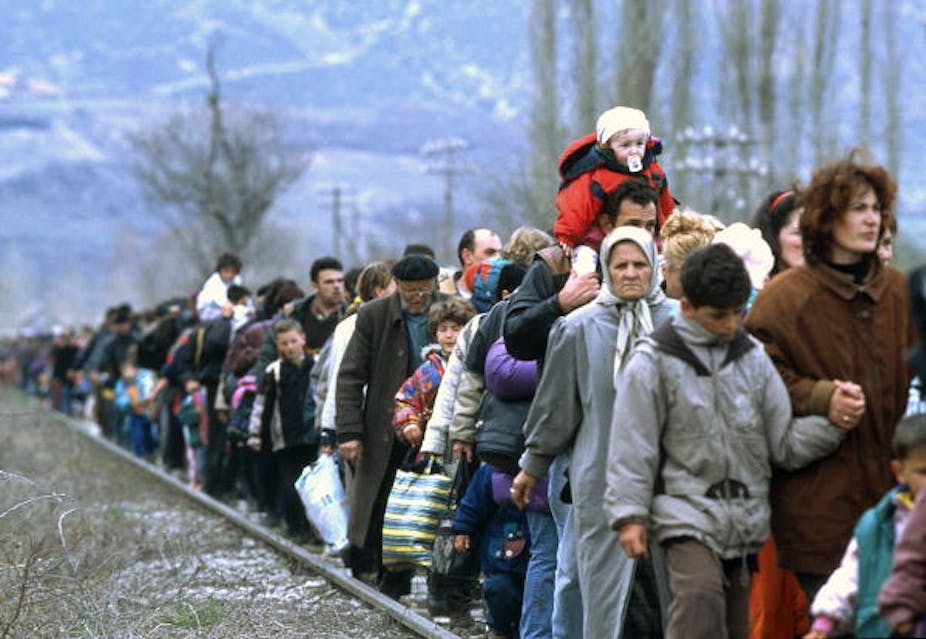Who are the “climate change migrants” we hear about with increasing regularity in the media and in global and regional policy forums? Are they the victims of devastating environmental forces - the result of Western industrial development and consumer greed? Or heroes of adaptation, showcasing human resilience and inventiveness by establishing new lives elsewhere and flourishing? The answer is more complicated than such polar narratives might suggest.
The idea of climate change refugees is not new. In the 1980s and 90s, environmental groups used images and questionable estimates of environmental refugees to reinforce the idea of a planet under stress. Migrants in the Sahel in Africa were portrayed as hapless victims of deepening drought, desertification, and conflict over scarce, diminishing resources.

Nowadays the more accepted view in policy and academic circles is that migration should be viewed as a lauded and helpful form of adaptation in the face of increasing environmental change, whether sea-level rise, drought, or devastating hurricanes. As the UK Migration and Climate Change Coalition says, “migration should be a vital component of individual and collective strategies to combat climate change”. They argue such options should be included in National Adaptation Programmes of Action, a UNFCCC initiative to enhance the adaptive capacity of the Least Developed Countries.
It is quite possible that this more positive policy approach can provide viable, welcome opportunities for many people living on the margins. But experiences of relocation in a variety of contexts tell us that planned movements of communities often present insurmountable problems. Even with funding for housing and infrastructure, relocatees often face unemployment, ongoing family disconnection (since a family member usually has to work elsewhere), and mental health problems. It is a struggle to reinvent themselves with diminished control over their own lives.
Funding often dries up prematurely, and relocation sites remain standing with half-built sewerage, drainage, roads and other essential infrastructure. Successful relocation requires intensive community involvement, an appropriate time-frame, and generous funding. Finally, one has to accept that some people will never fully adapt to the move.
So what about policies that facilitate individual or family movement internally within countries? I say internally, because there are currently no destination countries with policies designed to resettle people displaced by environmental hazards.
In the Philippines, where I conducted my PhD research, most internal migrants end up in the slums of metro Manila and surrounding industrialised areas. NGOs struggle to provide basic services to the most vulnerable living in these areas. The key development agencies are naturally aware of rural-urban migration, but there are very few policies to slow down the rural exodus.

Of course, people are not only leaving due to environmental stress – young Filipinos, like many other young people around the world, leave to seek the bright city lights. But minimal investment in agricultural development, nepotism and corruption, landlessness, as well as all the other problems farmers face everywhere (amongst them increasing environmental variability), mean that household heads see migration as the sole survival option to provide for their families. Their hope for the future rests in their children – that they may go to college and end up in non-farming jobs.
There is no clear and direct connection between the original reason for moving - for example whether it was “forced” or “voluntary” - and the (positive or otherwise) experience of migration itself. Migrants’ subsequent movement and welfare is affected by their access to key resources, whether it’s a supportive relative or an urban NGO livelihood project. Ostensibly “voluntary” (and by implication less vulnerable) migrants may well be exposed to exploitative situations where rights are denied by traffickers, labour recruiters and employers. Internal migration that leads to upward social mobility is incredibly rare.
Understanding people’s decisions to migrate is incredibly challenging. In reality, it is never a rational choice - there are so many factors involved. Habitual responses, previous experiences of migration, future aspirations and current problems that need to be solved, all feed into a decision. Deciding to move may require sacrifice; the result is often less a happy resolution and more the fulfilment of a lesser evil.
We need to move away from polarised and simplistic characterisations of environmental or climate change migrants. The complexity of people’s experiences and choices cannot be placed into neat categories such as “vulnerable” vs “resilient”, “forced” vs “voluntary”. We need to be aware of how narratives can be imposed, interpreted,and negotiated by potential migrants. This understanding will be essential to presenting a more nuanced picture of the political dimensions of migration as an “adaptation response”.

